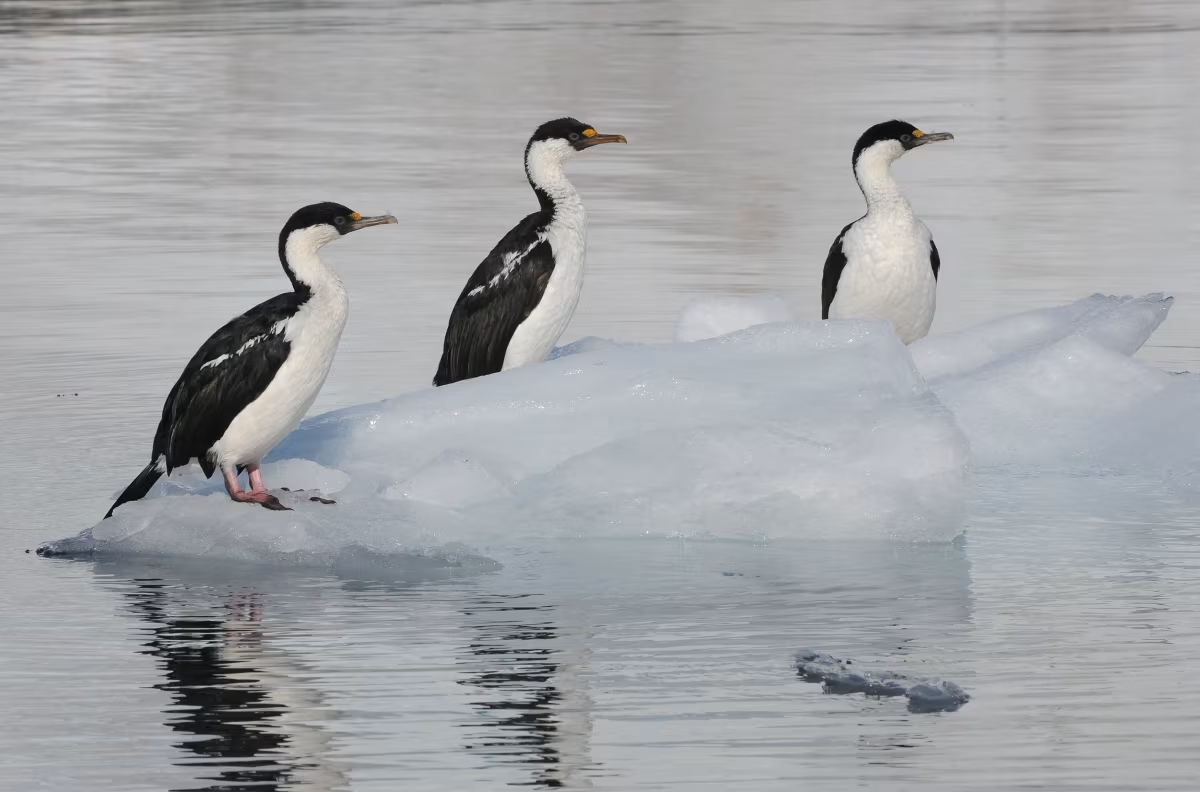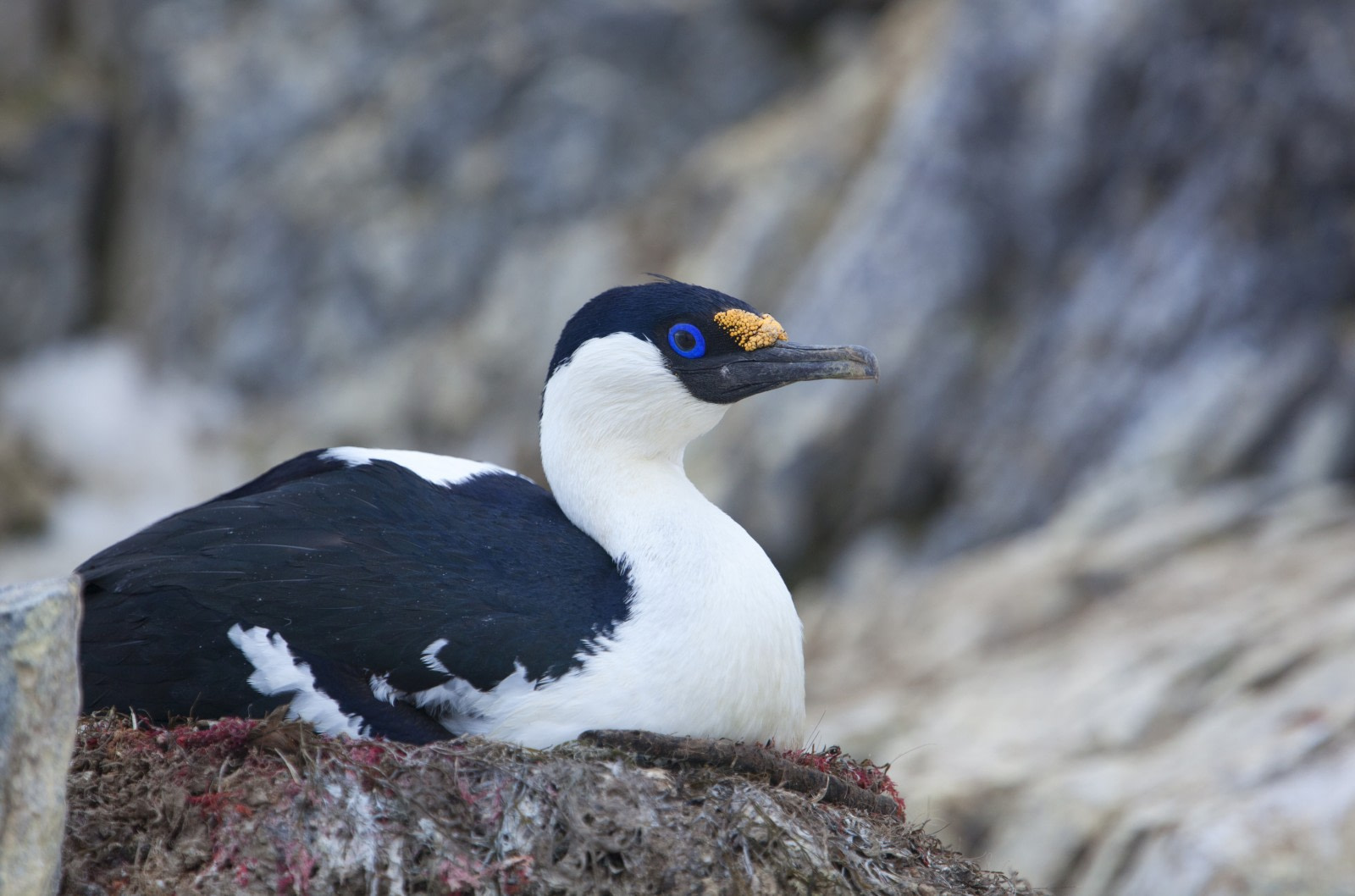Name: Antarctic Shag (Leucocarbo bransfieldensis)
Length: 70 to 80 cm.
Weight: 1.5 to 3.5 kg.
Location: Southern hemisphere from New Zealand and southern end of South America down through the Antarctic.
Conservation status: Least Concern.
Diet: Fish, crustaceans, octopuses, worms, snails, slugs.
Appearance: Blue, red, or purple ring around the eye (the skin around the eye is coloured, not the eye itself). White underparts, black backs and heads. Short black crest (during breeding season).
How do Antarctic Shags feed?
Antarctic Shags dive to a depth of 25 metres on average, with a maximum of 60 metres. They will fish together in groups that can number in the hundreds. These groups are known as “rafts” and are generally found close to shore. They aid each other by herding fish towards waiting fellow raft members.
They are able to stay underwater up to 4 minutes at a time.

Are Antarctic Shags social?
Antarctic Shags form small colonies during breeding season, usually measuring no more than a few hundred members (as opposed to the millions some other birds can boast).
They will sometimes share breeding grounds with other species like Black-browed Albatrosses, Rock Shags, and Southern Rockhopper Penguins.
How fast do Antarctic Shags fly?
Antarctic Shags can fly up to 50 km per hour.
What are Antarctic Shag birthing rituals like?
The breeding season begins in October through November.
Antarctic Shag pairs are monogamous. Nests are created out of grass and seaweed and kept together with a mortar of excrement and mud. The nests are rather built up, somewhat resembling a miniature volcano with the dip in the middle to accommodate the eggs.
The females will lay up to 5 eggs (usually 3). The incubation period takes about 5 weeks. Fledging occurs a little over a month after hatching.

How long do Antarctic Shags live?
Antarctic Shags live for 15 to 20 years in the wild.
How many Antarctic Shags are there today?
There are no real estimates for Antarctic Shag populations because scientists are still trying to pin down the exact taxonomy of the species. The roughest estimates put the worldwide population at over 20,000 individuals.
Do Antarctic Shags have any natural predators?
Antarctic Shag chicks and eggs are vulnerable to Sheathbills and Skuas and, depending on the location, rats. Adults can occasionally be taken at sea by Leopard Seals.

7 Superlative Antarctic Shag Facts
- The whole shag family is a cause of some taxonomy confusion. There are anywhere from 8 to 14 species depending on whom you ask.
- Antarctic Shags are the only kind of cormorant to enter the Antarctic proper.
- The Antarctic Shag (depending on an individual’s location in the world) is the only Antarctic bird that will maintain a nest year-round if the area is always free of ice.
- Antarctic Shags don’t travel far from their nests to feed. This made them a welcome sight for sailors and explorers at sea who, when spotting one of the birds, would know that land was nearby.
- Antarctic Shags are the only Antarctic birds whose chicks are born without a protective down leaving them especially dependant on their parents to keep them warm for the first few weeks of their lives.
- Antarctic Shags are constantly on the prowl to try to steal nesting material from their neighbours.
- Antarctic Shags have a bumpy nest of at the base of their bills called “caruncles”.












